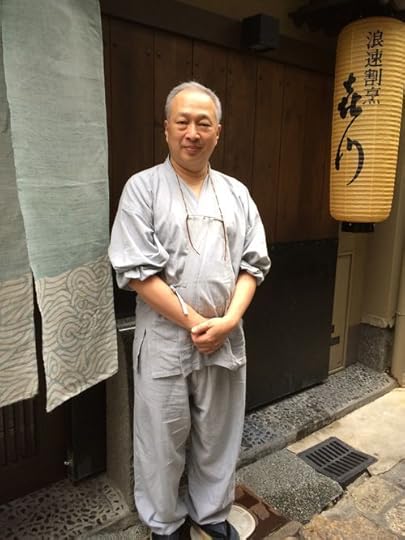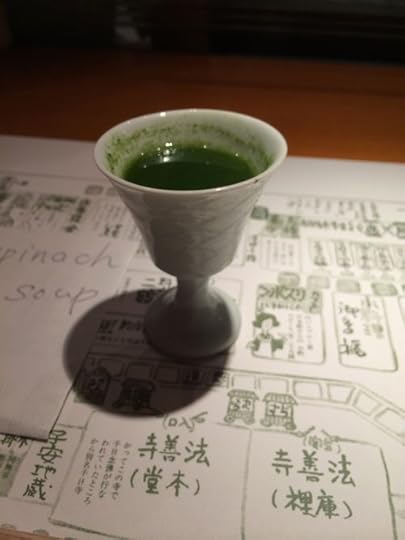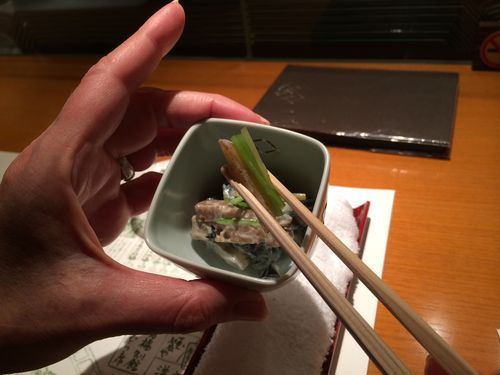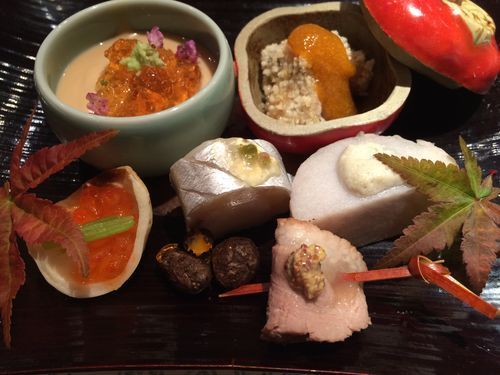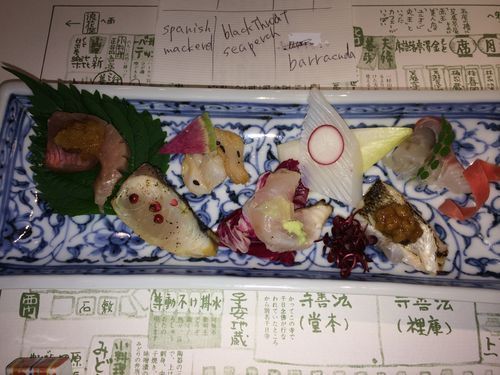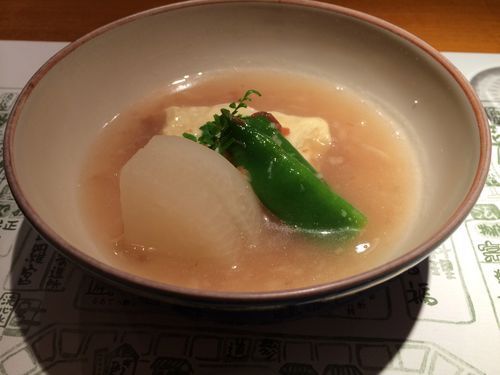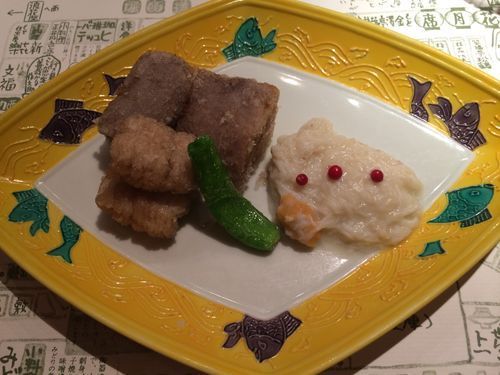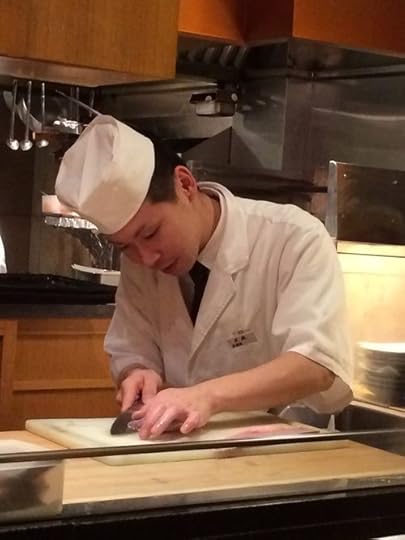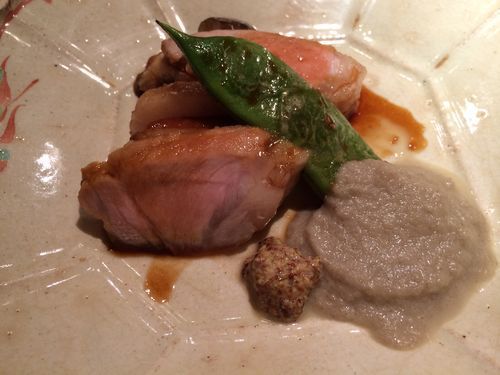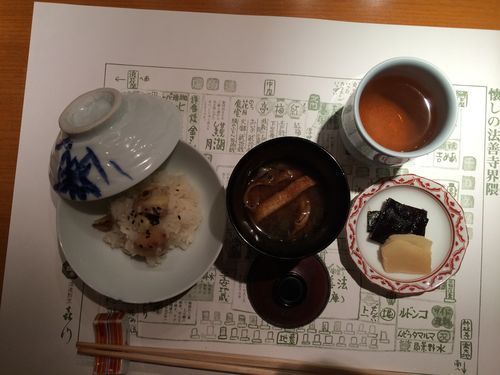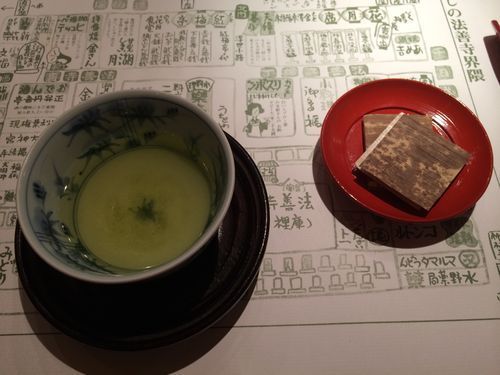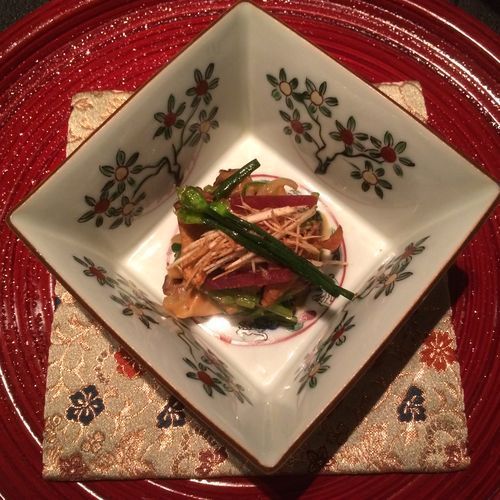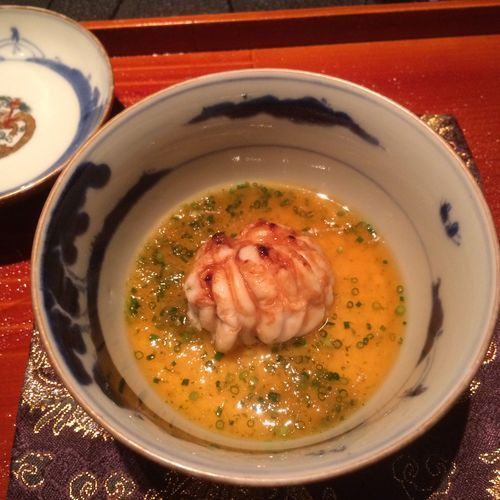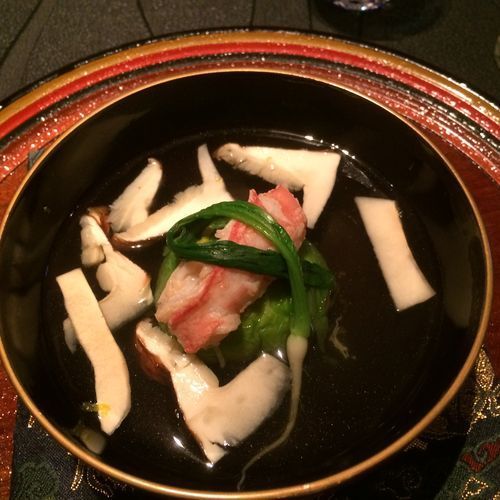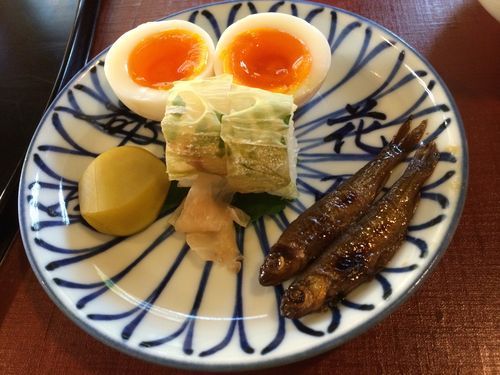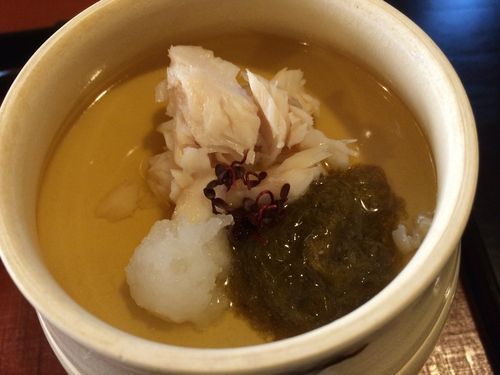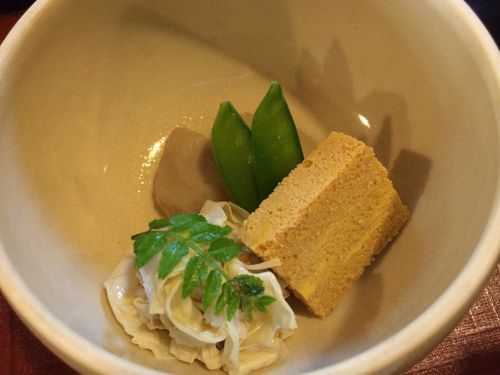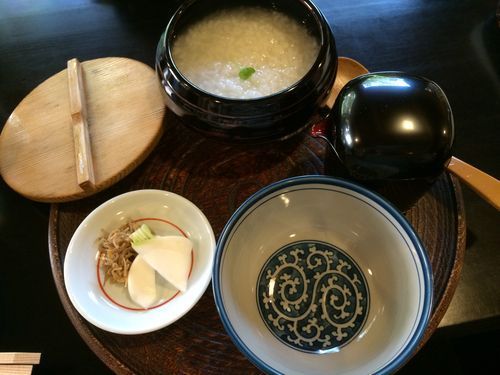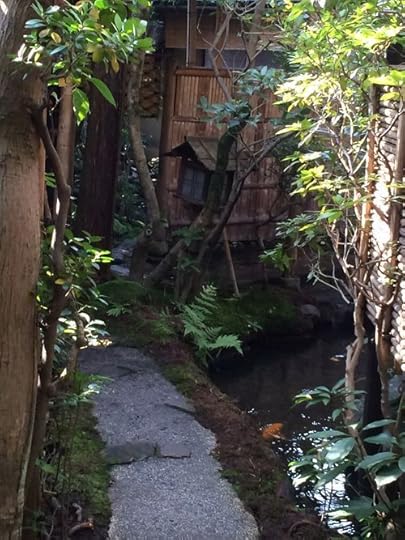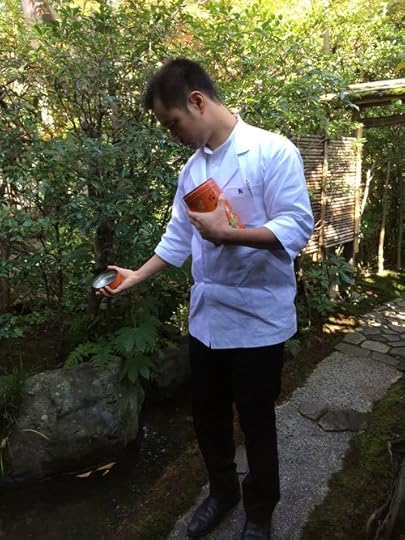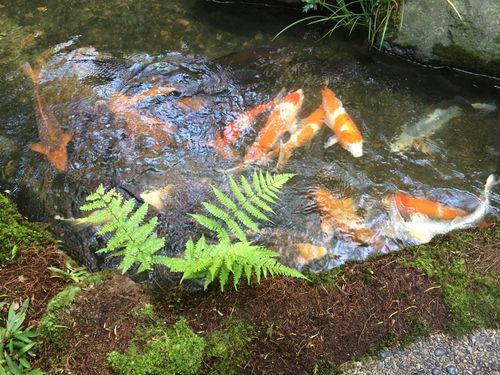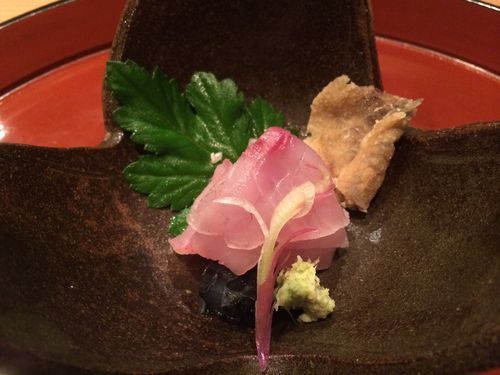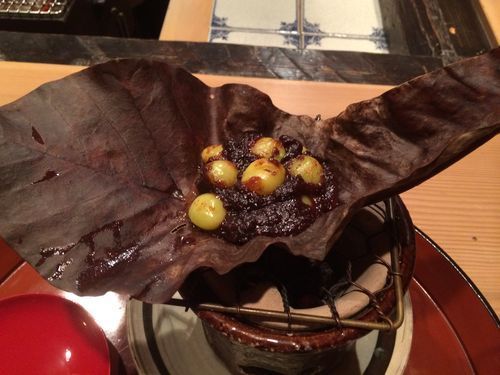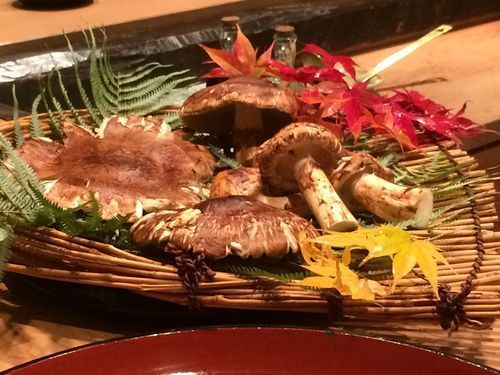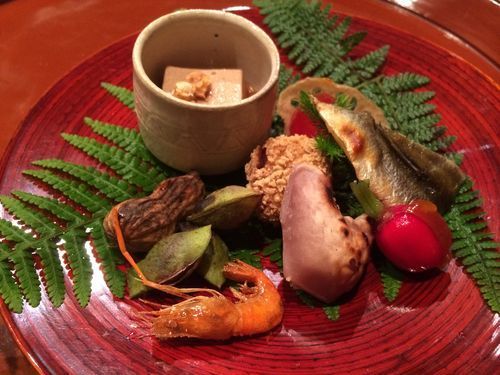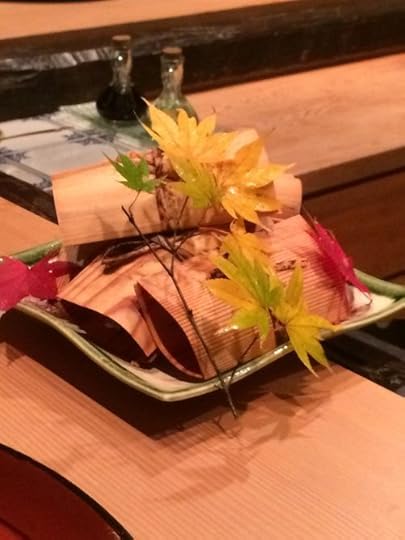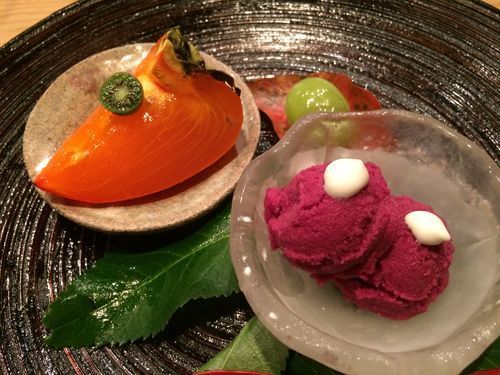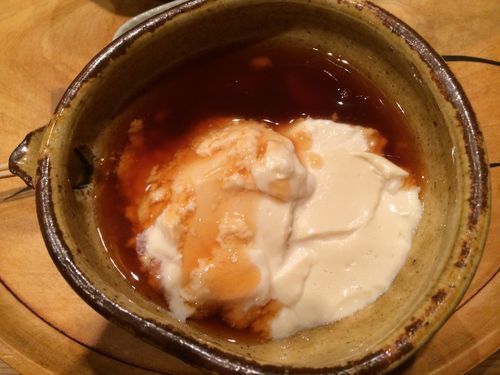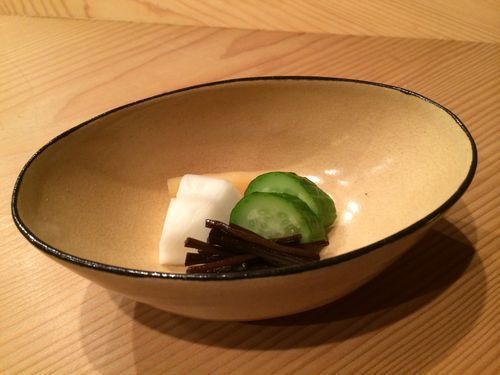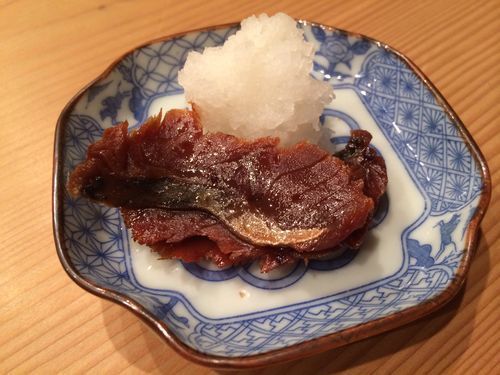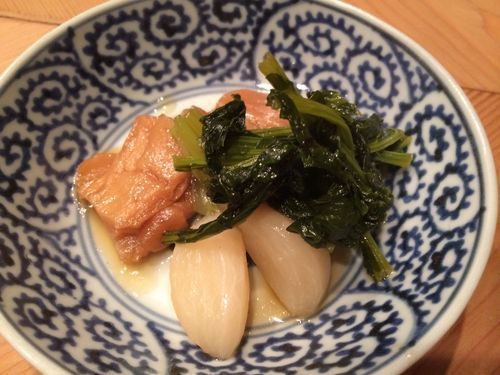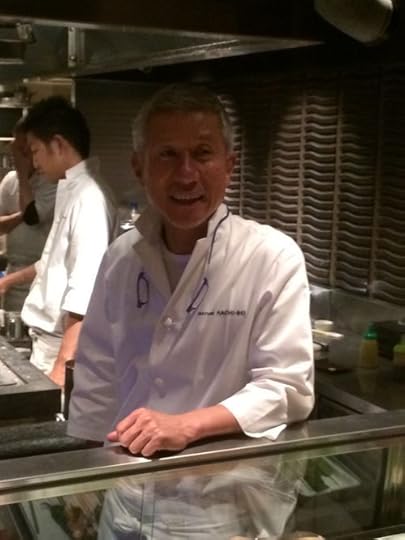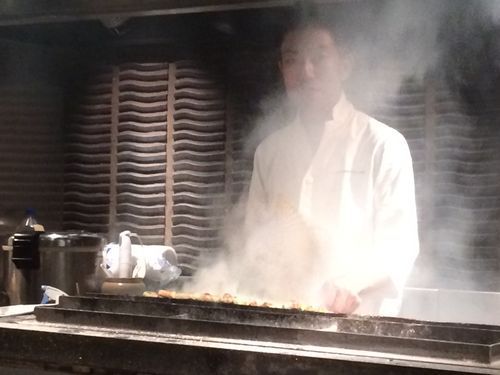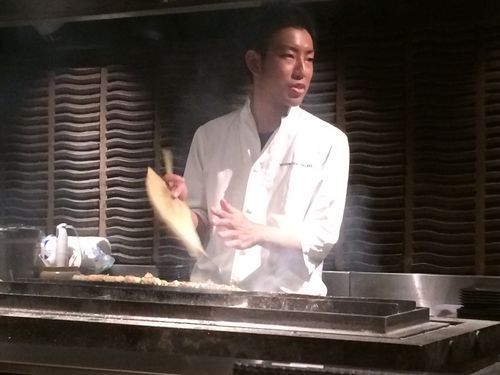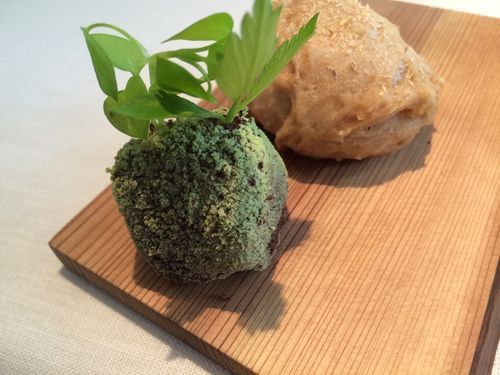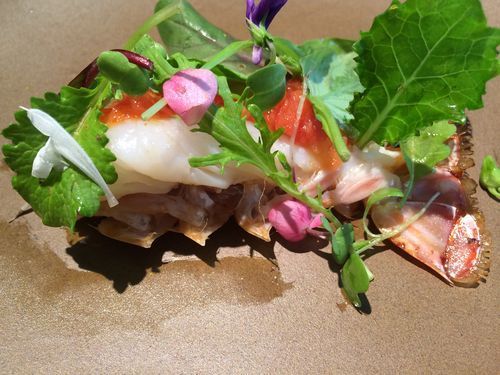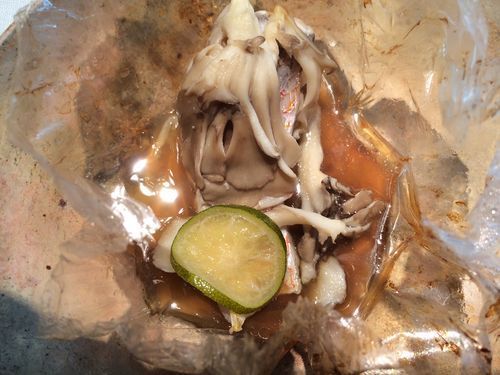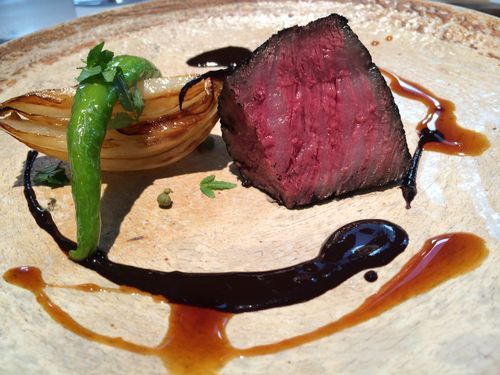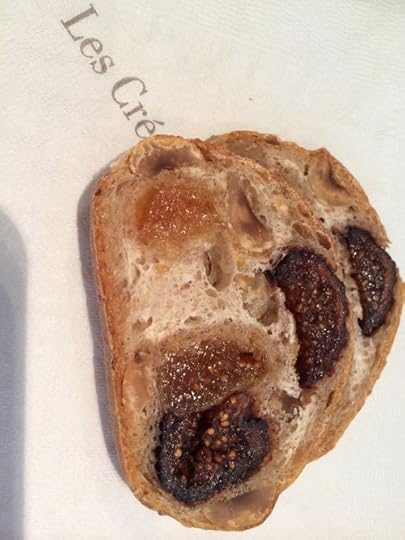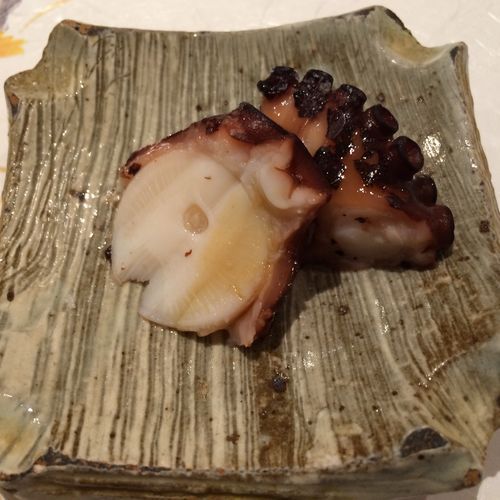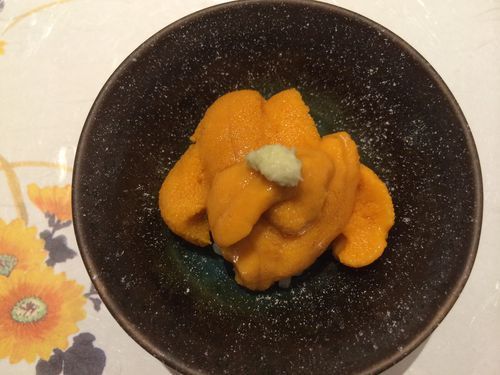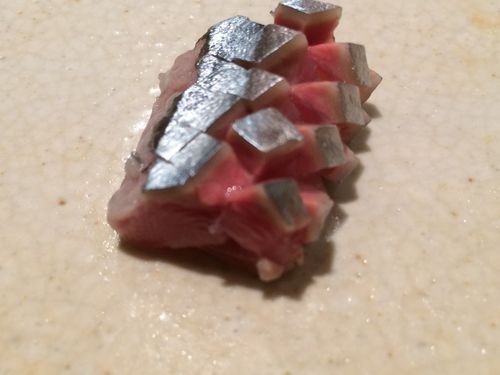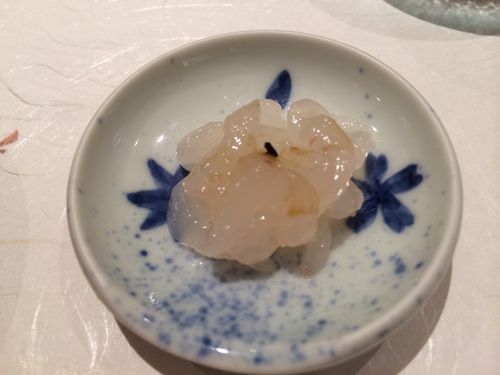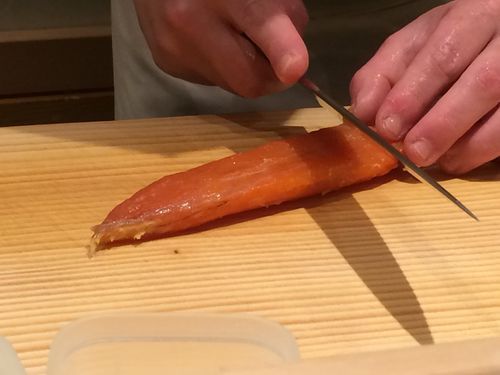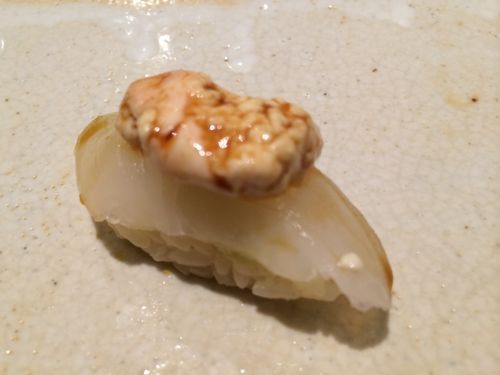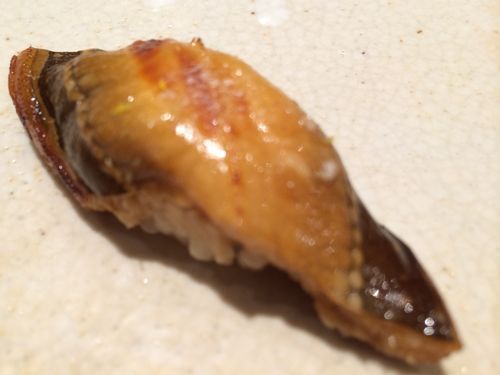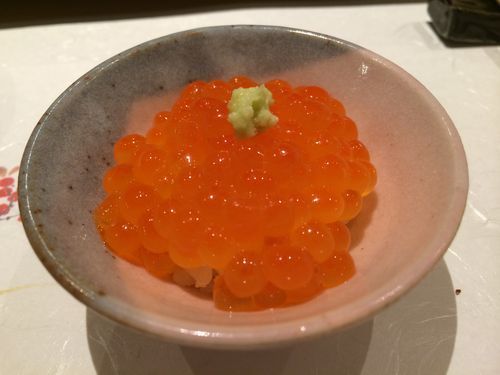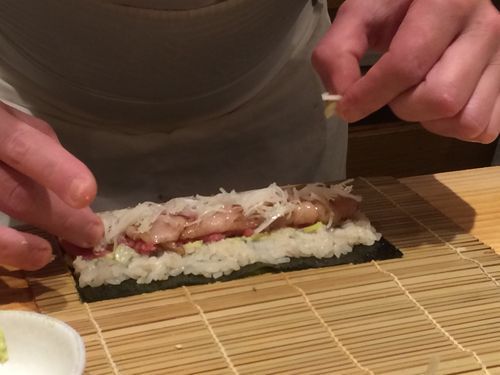Ruth Reichl's Blog, page 36
November 13, 2013
Notes from Osaka: Lunch at Kigawa
Trying to find the little alley we get lost three times.
It’s disorienting, this city of Osaka, the way streets turn into bustling covered arcades filled with discount stores, fast food and pachinko parlors, and then morph into tiny ancient little alleyways, too small to be called streets. Confusing, when someone tells you to turn on the next street, only to stand wondering if this little pathway between buildings - barely 2 feet wide - could properly be called a street. Finally a bustling little woman takes pity on us and walks us to the door of the restaurant.
After that it’s easy.
Chef Osamu Ueno serves the same meal to all of his 12 customers, standing in front of you with his 6 assistants, the entire kitchen visible. Kigawa is credited as the father of the kappo ryori places - a restaurant where you eat in the kitchen, watching the chef slice sashimi, roast fish, arrange plates, and then serve the food directly across the counter. For those of us who don't speak Japanese, kappo is easy; there's no need to order, and this tiny, friendly restaurant is a great place to discover what it’s all about.
The welcome. Bright green, bright flavor: spinach soup with a dashi base. (Notice the helpful translation.)
Salad: burdock, mibuna stems, spinach in a sesame dressing.
Autumn on a plate: peanut chawan mushi, tofu with persimmon jelly, yama imo, duck, sawara, trout roe. In the front, the tiniest little potatoes, the size of a thumbnail.
Sashimi, painstakingly translated: tuna, spanish mackerel, blackthroat seaperch, barracuda, squid, saba, red snapper.
Soup: daikon, yuba, kinome in turnip broth.
Fried eel, fried taro, crab, shisito pepper.
Simmered daikon, shrimp, onions.
Part of the show: fileting mackerel.
Rosy pork, extraordinarily sweet, with grated taro enhanced with pork jus and a dab of mustard.
Rice, pickles, miso soup, tea.
Final flavor: green tea, persimmon jellies.
Kigawa (1-7-7 Dotonbori, Chuo-ku; tel: 06-6211-3030).
November 12, 2013
Notes from Japan: RyuGin
The more I remember about this restaurant, the more it blows me away. It was so brilliant, in so many ways.
Thinking about RyuGin, in contrast to Kikunoi in Kyoto (notes on that meal still to come), makes it even more interesting. Because what chef Seiji Yamamoto is doing is, in some ways, so radical. He situates his restaurant squarely in the kaiseki tradition while reinterpreting each dish in an extremely modern way. The result is breathtaking.
Of all the meals I've had in Japan, I think this is the one that will linger in my mind. It's not that it was better - we've had so much fantastic food - but I am fascinated by the way the chef is reimagining what kaiseki food might be. It's extremely respectful reinterpretation; in the classic restaurants you feel you're tasting history, but this food wants to appeal to modern palates.
The intentions are clear from the moment you walk in the door. No kimono-clad women kneel to serve you, there are no tatami rooms, no removal of your shoes. It feels like a statement: if the old ryokans are taking you back to the Japan of long ago, this one is firmly anchored in the present - and looking forward.
Many patrons stroll in clad in jeans and sneakers, but the restaurant maintains its dignity. Every detail has been carefully considered: just take a look at those beautiful long charcoal-grey napkins. You unfold one and the rectangle floats across your entire lap making you wonder why most napkins are square. But just as you are thinking this the first dish arrives, and you stop thinking about anything but the food.
First dish. 17 different vegetable: julienned greens, pickled beets, mushrooms... You stir it all into its pinenut dressing and feel the flavors dance into your mouth.
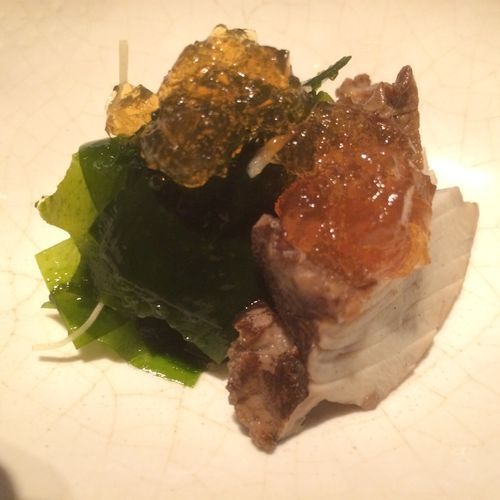
Steamed abalone, which arrives covered by a ludicrously large shell, in an apple jelly vinaigrette, with wakame seaweed. The abalone, tender and mild, is set off by the sweet sourness of the vinaigrette.
Chawan mushi with milt (shiroko). Soft soft with soft. It's milt season in Japan - we've eaten it everywhere - and it's the food I'll most miss when I leave. Ttranslated as "children of the clouds," it seems more like the cloud itself to me. We've had it deep-fried, rolled in squid ink, even pureed, but this presentation, on custard, emphasizes texture in a particularly wonderful way.
Matsuba crab from Sanin Bay is in season at the moment, and it should not be missed. What you can't see, hiding beneath that extraordinarily tender crab claw, is a crab dumpling wrapped in cabbage. The contrast between the matsutake and the crab claw - same shape, similar texture - very eloquently marries the sea and the forest.
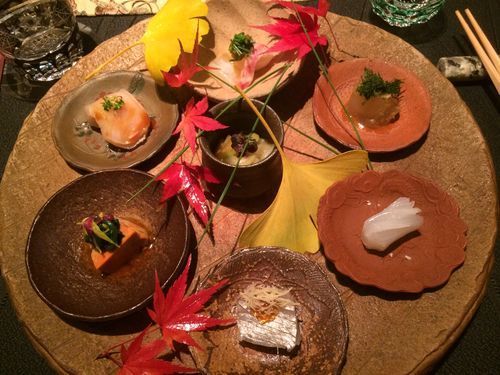
The sashimi course, clockwise:
sea bream, tai
raw spiny lobster
squid, so tender
shining silver skin fish
ankimo, with chrysanthemum stem. The liver itself was smoked until it resembled the world's best liverwurst
smoked spanish mackerel
in the middle, cured strips of squid.
Sea perch, its skin coated in roasted rice and then grilled to crackling crispness on binchotan charcoal. So amazing. The texture is emphasized by being paired with meltingly soft taro brushed with black vinaiger, a nod to the charcoal.
Prawn dumpling and turnip soup with yuzu citrus flavor. I'm not sure there's any way to explain how truly delicious this was. Imagine the most ethereal quenelle, made of seafood instead of fish, floating in the lightest turnip broth. Stunning!
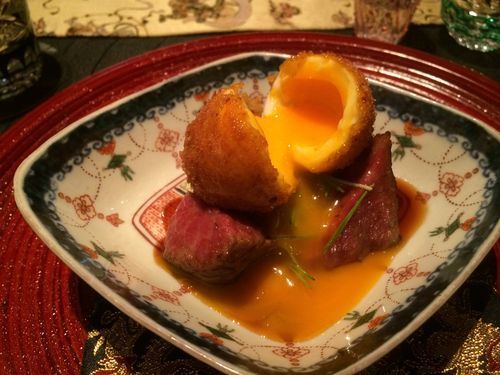
Grass-fed wagyu beef with a deep fried, soft-boiled egg. Texture, temperature, richness....
Chicken rice. Pickles, but so lightly done, they're almost fresh. And miso soup made with prawn broth that still, this late in this large meal, managed to make me stop and pay my respects. Miso soup tends to be shy and retiring, but this one shouts out loud. It was the best I've ever had.

Moelcular kaiseki: a candy apple that explodes! Crack open the hard candy shell and there's powdered apple inside . Next to it, a warm compote of apples. Playful but serious, it's another little waltz of temperature and texture. And also a nod to the apple vinegar jelly that was the second dish in the meal (this is the second to last).
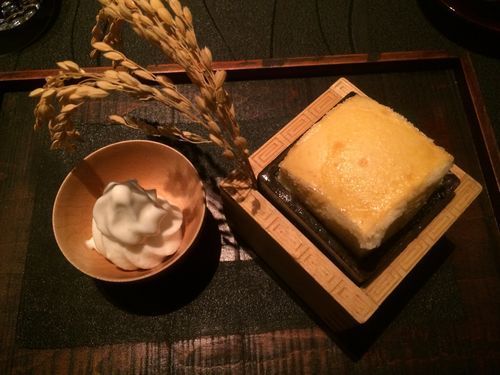
Cold sake: soft serve ice cream.
Hot sake: a dense little souffle.
An exuberant end to an extremely delicious and thought-provoking meal.
November 11, 2013
Notes from Japan: Hyotei
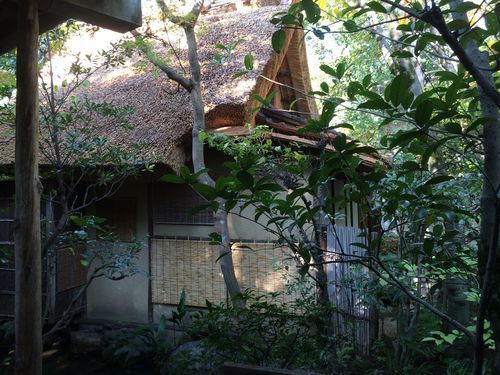
When I think about Kyoto, it's Hyotei I'll remember best. The 400 year old restaurant is famous for its kaiseki dinners, but we went early in the morning for asagayu, a stunningly perfect breakfast. Served in complete serenity, it's the most fitting way to begin a day in this city of temples. A moment not to be missed.
The meal begins with a cup of warm, rosy ume tea. Such a welcoming flavor.
Then this little still life appears, held out by women in kimono: two tiny, tasty fish, a perfect chestnut, one gorgeously boiled egg, its yolk halfway between solid and liquid, two pristine pieces of seaweed-wrapped sushi and ginger.
Next a stack of ceramics arrives. Take them apart and you discover that each holds a different range of flavors.
Muzuku, daikon, crab.
Yuba, kinome, and a wonderful substance that tasted to me like tofu laced with tiny roe.
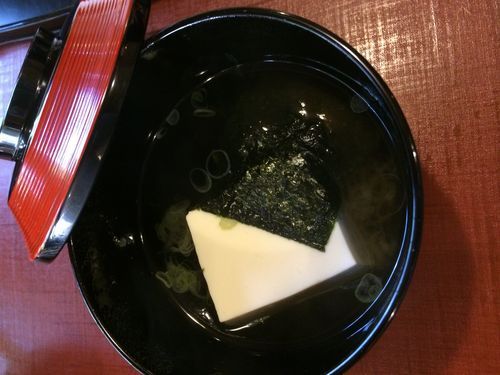
Then there is miso soup, a warm up to the main event. All this has just been a prelude to the most exquisitely cooked rice porridge.
This is subtle food. The rice is soft but entirely intact, served with a thick, slightly sweet, slightly salty syrup that tasted to me like excellent soy sauce mixed with dashi. Sprinkled with pickled turnip and tiny fish, this food forces you to eat slowly, thoughtfully, with concentration. You look out at the garden, take another bite. Sip some green tea.
As we were leaving....
...chef Yoshihiro Takahashi, the 15th-generation of his family to run Hyotei (which started as a tea house of the Nanzenji temple ) came out to feed the koi...
...who came rushing toward him.
November 10, 2013
Notes from Japan: Miyamasou
The drive to Miyamasou is gorgeous. And harrowing. We twist our way up a misty mountain road, through fields, forests and Buddhist shrines. As we rise higher the road narrows to a single lane, and we drive more and more slowly, peering into the mirrors at the curves to try to see what's coming toward us.
The sounds: waterfalls, babbling brooks, wind in the trees. The leaves are changing, becoming deeper red as we climb higher into the hills.
And then we are at the ryokan. The quiet is intense. A man dabbles in a small stone pond, netting fish. The entire staff rushes out to greet us, ushering us into the small, spare inn. Shoes are removed, tea is brought, and suddenly the entire world as we have known it drops away. We are in another world, another time.
The bath is spare, soothing, with a view to the trees and the brook running across the rocks just outside. We wrap ourselves in robes, put on wooden sandals and make our way up the path to dinner.
There are seven of us, seated around the chef who stands in the middle, cooking. The food goes from his hands to ours. Each dish feels like a gift.
First flavor. (Note the lovely mioga.)
Ginko nuts in gingered miso, roasted in a leaf.
Shrimp, peanuts, ginko: and hidden away, deep in the back, a single bright red egg yolk.
There are many, many more courses. And then desert:
Persimmon. Grape sorbet. And a single, huge, glazed grape.
Across the road, to another bath, and big fluffy futons.
We wake to rain, which makes the ryokan even more otherworldly than the sunshine. A bath. And then what might be the world's best breakfast.
The trip down the mountain is even more harrowing in the rain. Half an hour down the road big trucks start rumbling toward us, and by the time we reach Kyoto, we're prepared for civilization. But it's nice to know that Miyamasou is up there on the mountain, waiting.
November 9, 2013
Notes from Tokyo: Hachibei Yakitori
You know the minute you walk into this elegant little yakitori shop that you're going to eat well. Owner Katsunori Yashima is SERIOUS about his yakitori, and no matter how many meals you've already eaten when you walk in the door, near midnight, you're instantly hungry. It smells like chicken, like meat, like charcoal and like sake, which is what creates the steam.
The chicken is fantastic - every part is here - along with vegetables, velvety beef tongue, and pork belly that slides easily down the throat. (There's also a wide variety of other dishes: sushi, even dessert. But it's the yakitori that you come for.)
Yakitori Hachibei is also a great place to go when you're craving a break from sake: the wine list is long.
Notes from Tokyo: Les Creations de Narisawa
White. Pristine. Pure. That's the impression you get when you walk in the door of this beautiful modern restaurant. All clean lines, white linen, sparkling glass. This spare room is a stage for the food: you sit down and wait for the curtain to rise.
The menu announces "The Autumn Collection: Evolve with the Forest." So we're in fashion territory, as much as food. And here is how we are wearing our bread and butter today:
The bread (well, to be honest, one of many fantastic breads) is baked right at the table, in a little stone crock. It's wonderful stuff, chewy, laced with one of the Japanese lemons, and you take one bite, and then another, chasing the flavors until it's gone. The butter - dusted with charcoal, rolled in "moss" is irresistible too.
There are many dream-like courses. This langoustine appears, clearly vying for the title of world's best-dressed crustacean. Lovely as it is, it tastes even better.
Then there is the amazing squid, which is dressed at the table in a nitrogeon vinaigrette, all showy misty, steam that slowly evolves into a wonderful sauce. (And as soon as I figure out how to embed video in this blog, I'll show you how it begins with solids spooned onto the hot seafood, and deliquesces into a little river of the most delicious sauce.)
Then there is a soup, the intense broth made with this wicked creature, who proudly struts his stuff along the runway of the table, terrifying everyone: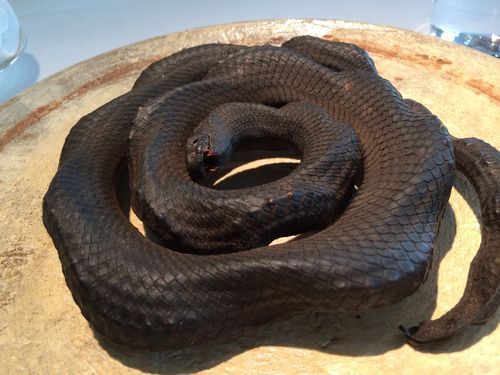
The broth has soft chunks of bitter melon that melt in your mouth, and fatty, chewy and yet somehow crisp chunks of pork.
Next came beautiful plates, each holding a package, tied up like a gift. Servers prance around the table, opening each one so that vaporous mist rises through the dining room, perfuming it with the scent of tilefish, matsutake mushroom and the turtle essence in which its all been cooked.
Then the meat appears, a fashion statement, a vision in black.
It is quickly whisked away, to return wearing a new outfit:
Can you see the stripes of fat? It's an amazing piece of beef, adorned with what may be the tastiest little piece of onion I have ever tasted.
Cheese is next; when did the Japanese start making cheese this good? There's a washed rind cheese that reminds me of Epoisses - dense, runny, funky - and a cheddar-like cheese as well. Best of all? It comes with this bread:
After all this, you're expecting the dessert to be the bridal gown of this fashion event, and it does not disappoint. It comes to the table in a flash of shape and color, and everyone gasps. They're gorgeous, these little pastries - although to be honest, they're made more for the eye as the mouth.
Les Creations de Narisawa. If you go to Tokyo, go. As they say in France, vaut le voyage.
November 5, 2013
Notes from Tokyo: Tempura Tenko
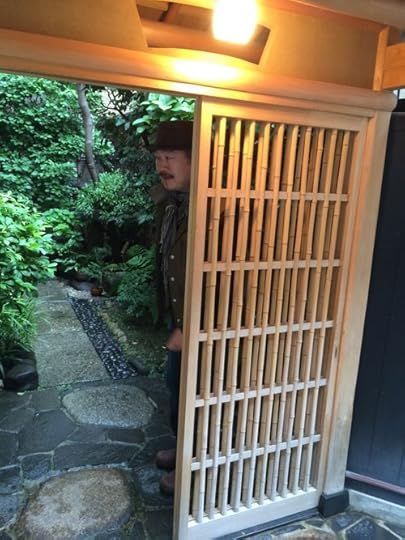
This is not the Tokyo of Lost in Translation, with its towering buidings, neon skyline and efficient transportation. This is the Tokyo of your dreams, a tiny restaurant on an alley lined with charming old-fashioned houses.
Inside, the chef sits, surrounded by his guests, an actor on a stage as he performs an ancient food ritual, pulling one pristine piece of crisply fried food out of the bubbling pot in front of him, and then another. Each is perfectly cooked, completely grease-free, and each morsel speaks with its own voice.
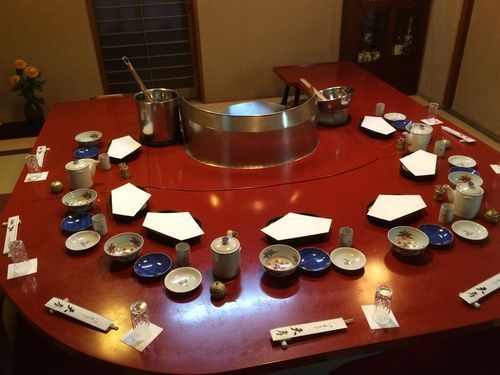
It is a long, langorous, gracious meal. The chef's mother pours sake, brings dipping sauces, an acolyte in service of the dining experience. Before the performance itself begins, she sets a plate of sashimi before you, perfect buri (large yellowtail), sweet, cold, rich. And then the show begins as chef Hitoshi Arai takes his seat and begins to cook.

A few highlights, among many:
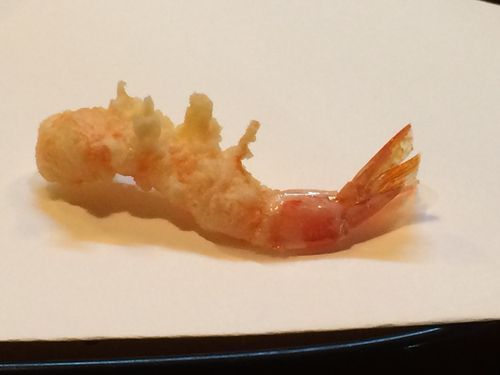
Sweet, tiny fried shrimp, which put every other version I've ever tasted to shame.
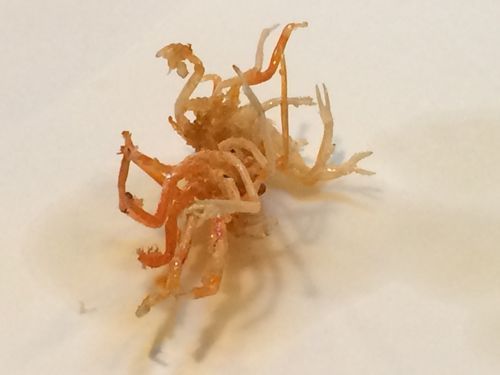
Tiny crabs, all crackle and crunch.

Cured squid: funky, intense, a flavor that stops you in your tracks and resonates in your mouth.
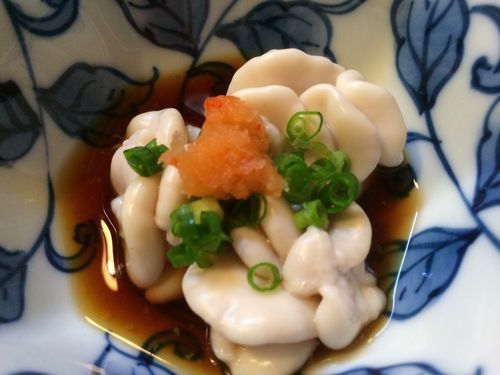
Got milt? Yes indeed. A substance unlike any other: imagine a custard contained in a cloud, something soft, tender, gentle. Think of tofu, of an almost melted marshmallow. The flavor: rather sweetbread like. Wonderful stuff, this fish sperm.
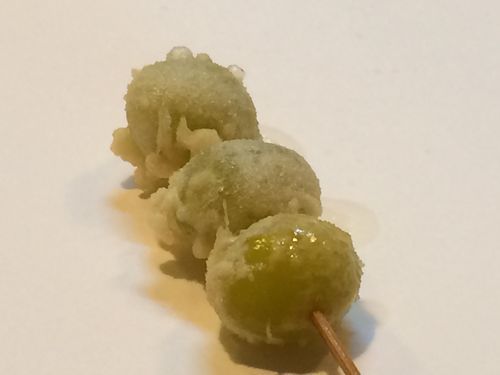
Ginko nuts. In season now. Soft. Subtle. Irresistible.

Fried fresh ginger. The perfect palate cleanser.
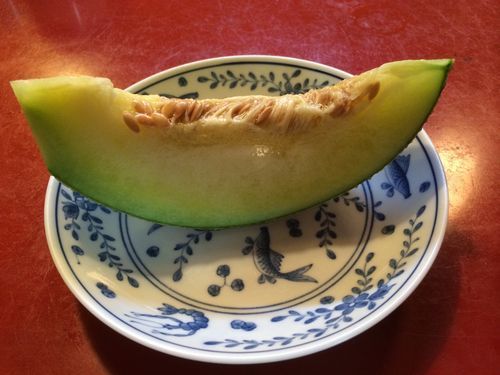
This melon has ruined melon for me forever. I've never tasted any fruit so perfect.
Ice cold. Juicy. Fragrant. Pure. It reminded me of what Durrell said of olives: "A taste as old as cold water."
November 3, 2013
Tokyo: Sushisho Masa
Walking down the cramped, narrow stairs to Sushisho Masa, a 7-seat counter in Tokyo, I have no idea that this experience is going to forever change my standards for sushi.
But as I inhale one extraordinary slice of fish after another, I begin noticing nuances of flavor I've never before experienced. Chef Masakatsu Oka is a pleasant, modest man who bends over the fish with a tender expression, intent on his work, but you can taste his passion in every bite. He's proud to answer every question: where was this fish caught?, how long was it cured?, why? I notice that he's not wearing the standard sushi chef's apron, but that of a sumo wrestler. A message? 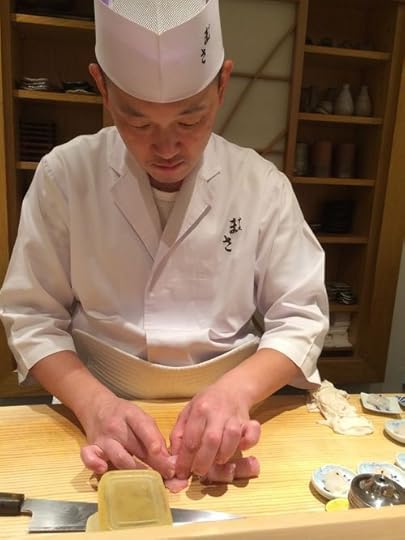
I'm not going to go through every course of a dinner that lasted 3 hours and included at least 35 different varieties of fish. But I'll mention a few favorites.
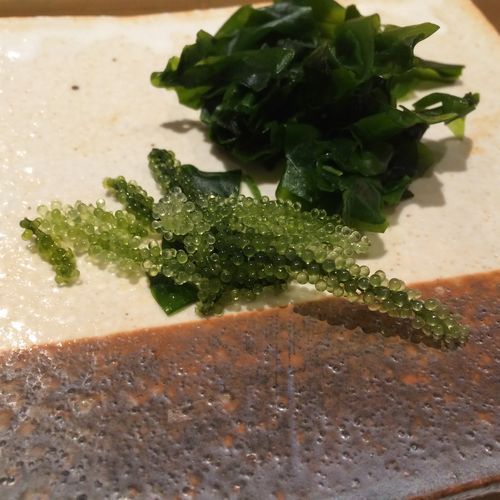
Sea grapes - a seaweed from Okinawa - that is among the most refreshing palate cleansers I've ever encountered. Each little bubble pops in your mouth with a burst of brine.
Wild octopus - remarkably tender, with a creamy custard-like layer just beneath the crisp tentacles. I've never tasted anything quite like it.
Uni from Hokkaido. I've always thought Santa Barbara sea urchins were the best in the world. I was wrong.
Spanish Mackerel. I wish I were a better photographer; this was so beautifully cut. And pure pleasure in the mouth. It was followed by the same fish, lightly grilled.
Tiny shrimp, each one no bigger than a fingernail, each one so soft and tender that it seems impossible it contains such depth of flavor.
Karasumi - Japanese bottarga - the mullet roe cured to an entirely different taste and texture than any Mediterranean variety. Soft without being sticky, the surprise is that it is not in the least bit salty. If you close your eyes, you might be eating candy.
Fluke - and its liver. I expect the liver to resemble ankimo, the rich monkfish liver that is the foie gras of the sea. But it is entirely different: softer and much more subtle in flavor.
Anago - sea eel - is a pure astonishment. It looks like every other piece of eel I've ever eaten, so I'm utterly unprepared for the almost fluffy texture of the fish. Or for the way it simply vanishes, melting in my mouth like so much snow.
Trout roe, which explodes in my mouth in a way you always wish caviar will, a tiny flood of flavor. The surprise here is, once again, that it is not the least bit salty. Just the pure essence of fish. Hiding underneath is a small ball of Mr. Oka's rather amazing rice, which he mixes with four different kinds of vinegar.
I'm skipping so many wonderful fish: small herrings, kohada, fantastic tuna, a tiny grilled fish I eat in one bite. But at the end there is this roll:
Toro, along with a strip of its own fat (Japanese lardo), and some finely julienned member of the onion family. Wrapped up in rice and seaweed, it makes me think of the motto of Prexy's, a long-gone New York restaurant: "the hamburger with a college education." It's a very elegant translation - and one of the most delicious things I've ever tasted.
At the end, of course, there is tamago, a tiny square of mirin-enriched egg that is the perfect final flavor. Then we're bowed out the door and up the stairs, and into the raucous Tokyo night.
October 31, 2013
Lunch at the new Red Farm, Upper West Side

Craziness on a rainy Halloween afternoon! How do all these people crowding into Red Farm know the place has opened? Red Farm is so squeaky new it isn't even serving dinner yet, but if Joe Ng and Ed Schoenfeld thought they were going to manage a soft lunch-only opening, they were very much mistaken.
Food people are pouring in; today it's John Besh at one table, Chris Conant and Josh Wesson at another. And isn't that the actor, Tom Skerritt, in that booth over there?
It's wild insanity, and enormous fun. Strangers pass tidbits from one table to the next and pour out glasses of wine. (The Ruggine Josh Wesson's drinking is lovely; slightly fizzy, it's an unusual wine that's perfect with this intensely flavorful food.)
The food itself is fantastic. These soup dumplings:
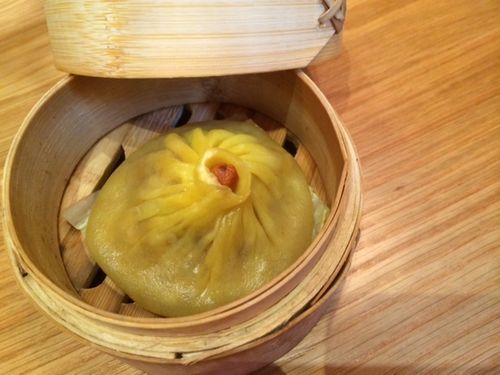
are huge, floppy, juicy creations that are almost unimaginably light. They're so satisfying and delicious that if I'd eaten nothing else I would have left a happy woman.
But that would have meant missing the vegetable pancakes
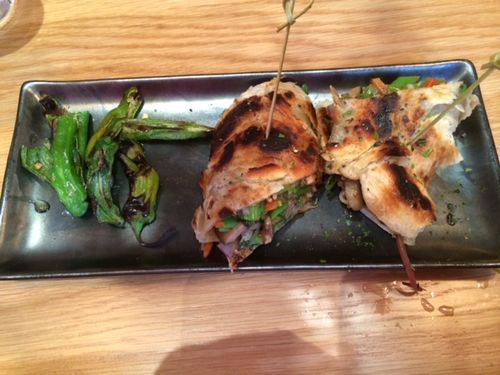
a fantastic riff on mu shu that redeems this too-often ordinary dish.
And you definitely do not want to miss the pork chops:

slightly charred, the crisp edges taste of lemongrass and garlic, and come perched on a mound of the most wonderful fried rice.
Dessert? The fruit plate was as pretty as that tuna salad which started off the meal. (See above.)
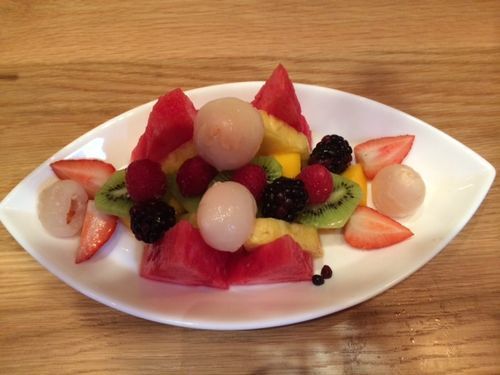
October 29, 2013
Note from Chicago

At Frontera Grill with the wonderful Rachel Joyce (author of The Unlikely Pilgrimage of Harold Fry).
She landed from London, hungry for Mexican food. Favorite dishes: Mexico City quesadillas, smoked ruby shrimp, garnachas de pato. And those beautiful Scarlet Waves.
Ruth Reichl's Blog
- Ruth Reichl's profile
- 2980 followers


